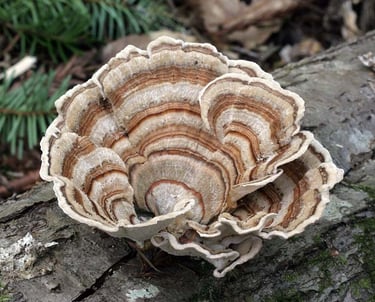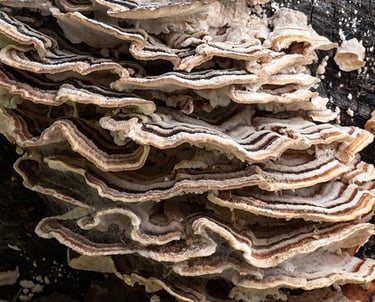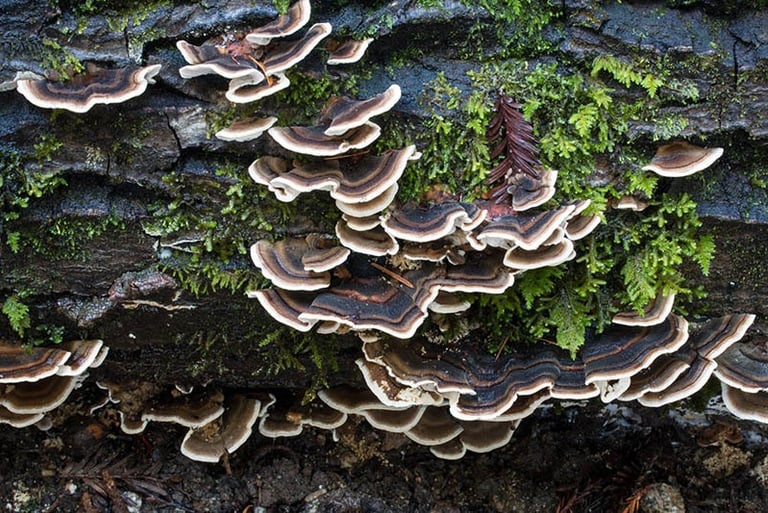Trametes Versicolor


Image by Michael Wood
Hygrophoropsis aurantiaca, also known as the false chanterelle, is a mushroom species that is found in North America and Europe.
Description
Certainly! Here are the numbered descriptions for Trametes versicolor (Turkey tail):
1. Cap: Trametes versicolor does not have a distinct cap. Instead, it forms a thin, fan-shaped or semicircular fruiting body that often overlaps with other nearby specimens. The upper surface of the fruiting body is velvety and concentrically zoned with various shades of brown, tan, white, and sometimes blue or green. The colors resemble the pattern of a turkey's tail feathers.
2. Gill: Trametes versicolor does not have gills. Instead, the underside of the fruiting body is porous and consists of many small, closely spaced pores. The pore surface is typically white to cream-colored.
3. Stem: Trametes versicolor does not have a distinct stem. The fruiting body attaches directly to the wood substrate it is growing on, with no discernible stem structure.
4. Spore Print: The spore print of Trametes versicolor is white to pale yellow.
5. Habitat: Trametes versicolor is a wood-decaying fungus commonly found on dead or decaying hardwood logs, stumps, and branches. It is widely distributed and can be found in various habitats, including forests, woodlands, and even urban areas. It is a saprophytic fungus that plays an important role in decomposing wood.
These numbered descriptions should help you understand the specific features and characteristics of Trametes versicolor. Remember to exercise caution and consult an expert if you are uncertain about the identification of a mushroom or bracket fungus.









